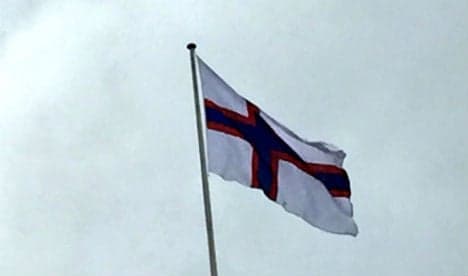Danish PM in 'embarrassing' Faroes flag blunder

A move by Danish Prime Minister Lars Løkke Rasmussen to curry favour with the Faroe Islands by granting them an official flag day has backfired spectacularly after the wrong flag was hoisted on at least two official buildings.
At both the Stock Exchange in Copenhagen and the main building at Copenhagen University, flags were hoisted which swapped around the red and blue colours of the Faroese cross.
“This stresses — in an embarrassing manner — my original point that we should know more about eachother in the Danish Realm,” Rasmussen said in a tweet after the blunder was reported.
Sjúrður Skaale, a Faroese politician, told the Politiko news site that when he had first seen the pictures of the faulty flags, he had initially suspected they had been digitally altered, as he could not believe that the Danish government would be so careless.
“This shows that there really is an unimaginably huge lack of knowledge about the Faroe Islands in Denmark," he said. “There are many in the Faroes who also see it as a lack of respect.”
Rasmussen announced plans for the flag day in March this year, selecting July 29, the Faroe Islands’ national day, for the ceremony.
The source of the problem appears to be Dahls Flagfabrik, Denmark’s oldest flag factory, which boasts on its website that it has only once sold out of the much loved Dannebrog -- on the day Denmark was liberated from German occupation on May 5, 1945.
Peter Østerbye, the company’s director said it was “embarrassing” that it seems to have sent out flags with transposed colours.
The Faroes belonged to the Kingdom of Norway for nearly 800 years before they were handed over to Denmark, along with Greenland, in 1814 as part of the Treaty of Kiel.
Since 1948 they, like Greenland, have been a self-governing part of the Danish Realm.
Here is a true Faroese flag with a red cross inside a blue cross:

Comments
See Also
At both the Stock Exchange in Copenhagen and the main building at Copenhagen University, flags were hoisted which swapped around the red and blue colours of the Faroese cross.
“This stresses — in an embarrassing manner — my original point that we should know more about eachother in the Danish Realm,” Rasmussen said in a tweet after the blunder was reported.
Sjúrður Skaale, a Faroese politician, told the Politiko news site that when he had first seen the pictures of the faulty flags, he had initially suspected they had been digitally altered, as he could not believe that the Danish government would be so careless.
“This shows that there really is an unimaginably huge lack of knowledge about the Faroe Islands in Denmark," he said. “There are many in the Faroes who also see it as a lack of respect.”
Rasmussen announced plans for the flag day in March this year, selecting July 29, the Faroe Islands’ national day, for the ceremony.
The source of the problem appears to be Dahls Flagfabrik, Denmark’s oldest flag factory, which boasts on its website that it has only once sold out of the much loved Dannebrog -- on the day Denmark was liberated from German occupation on May 5, 1945.
Peter Østerbye, the company’s director said it was “embarrassing” that it seems to have sent out flags with transposed colours.
The Faroes belonged to the Kingdom of Norway for nearly 800 years before they were handed over to Denmark, along with Greenland, in 1814 as part of the Treaty of Kiel.
Since 1948 they, like Greenland, have been a self-governing part of the Danish Realm.
Here is a true Faroese flag with a red cross inside a blue cross:
Join the conversation in our comments section below. Share your own views and experience and if you have a question or suggestion for our journalists then email us at [email protected].
Please keep comments civil, constructive and on topic – and make sure to read our terms of use before getting involved.
Please log in here to leave a comment.